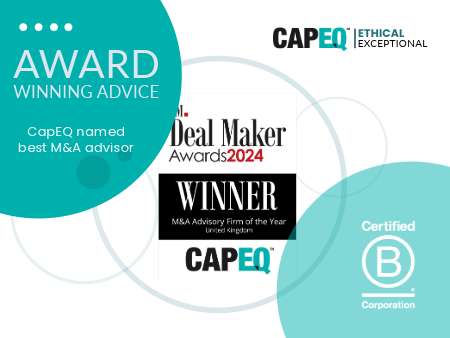Owner-directors often play a dual role of both the company’s greatest asset and its weakest link. The decision to sell shares brings these into sharp focus. Here’s our advice on how to reduce business owner dependency.
“I built this business. No one else knows it, lives it or loves it like I do.”
Does that sound like you?
If so, it’s probably true – your business may be all about you.
While your passion does you credit, owner dependency can be a high-risk business model.
The concentration of power demotivates managers, you are at risk of burnout, and customers struggle to distinguish between the brand and the boss.
While there are exceptions to this rule – veteran-owned or female-led can be a competitive advantage in some industries – businesses with higher personal goodwill often find it really hard to step back when the time comes.
So, how can you reduce your dependency on the business – and its dependency on you?
The easiest decision is never to sell – if you love what you do then keep on doing it.
It might make sense to keep on keeping on if the business can’t manage without you. But take a moment here. If you truly believe that you are indispensable, consider whether or not this is the case. If so, is it healthy for everyone concerned?
The smaller the organisation, the more central you will be, but even a small business shouldn’t be totally reliant on one person. After all, the business doesn’t close down when you go on holiday. If you read the news for a couple of hours, everything still functions. If you’re not around to make choices, someone else is. Even if you do reserve all the big decisions to yourself, you will have a partner or lieutenant who should be in a position to take on some or all of this on when you depart.
Handovers can be gradual. The vast majority of acquirers prefer to transition over a year or two to transfer this personal goodwill to the new management. This gives you the chance to hand over responsibilities and gradually ease back.
So however much you understand and love your creation, there has to be a time when you ease off and hand over – unless you are determined to die in harness.
Embrace culture change as you prepare to exit
Some of our clients are shareholders who meet their management team no more than monthly, reflecting trust and the separation of powers; others are fully involved in every element of the business, creating hands-on efficiency but also dependency. The challenge is to move the latter towards the former position.
Your business sale proposition will be much stronger if you present the buyer with transferable, inbuilt competency across systems and personnel, as opposed to a vacuum after your departure.
Removing co-dependency takes time and a good plan, so preparing well in advance is key. But what do you need to prepare?
Get the right team in place so you can exit your business
If you genuinely believe that when you are not present the sky falls in, you may have the wrong people in place. You are almost certainly retaining too much day-to-day control. Either way, now is the time to put things right – so that when you do decide to sell, you can pass on a proposition that is not totally reliant on you.
This ‘progression planning’ can entail recruitment and/or training, with talent brought in to bridge a business sale. If you have not already done so, now is the time to bring in people who are better at your job than you are. Expand if you can: the larger the organisation, the less central you can make yourself.
Additionally, you need to develop your existing management team and workforce. Your buyer will need people to work with and trust: it is in everyone’s interests to hand over a strong team who know how to run the essentials of the business.
Progression planning will entail adjusting your role from leader to facilitator, empowering others. For instance, if 20% of your business is with one client and you own that relationship, make sure someone else is introduced and given time to take over the reins/earn trust.
Automate your systems to make sharing tasks easier
To make a transition easier, introduce or embed processes which make operations and systems consistent.
Such processes should be visible, accessible, automated and easy to transfer between leaders. They should govern and direct decision making in all areas, ranging from financial accounting to new lead documentation, onboarding to manufacturing processes – and all points in between.
Get comfortable with letting go
Of course, a lot of owner dependency reflects feelings as well as facts. See The Emotional Impact of Selling a Business to understand the emotional turmoil when stepping back from work that has consumed so much of your attention.
Some of our clients find that their ego, identity and sense of self-worth are so wrapped up in their business that they need to spend as much time getting their heads and hearts aligned as preparing the organisation for its next phase.
Others have become used to being the sole decision-maker, resenting the loss of agency and control that comes with business divestment. In each case, CapEQ helps move them from the centre of the web to its edge, guiding our clients along a business exit route that replaces control with new opportunities.
Enjoy your freedom as your business exit nears
Stay focused and persistent.
It is tempting to ignore all these ways of enhancing your existing business and making it more appealing to suitors, especially when a sense of co-dependency begins to give way to a feeling of impending freedom. Losing interest is an equal but opposite risk to feeling tethered to the business.
If all you can see is the pot of gold at the end of the divestment rainbow, you are likely to lose your focus on getting the business into shape. The irony of course is that without preparing the ground, the pot of gold gets smaller and the rainbow disappears.
Make yourself dispensible
By the time you sell your business, or complete the transition period, you should have made yourself less critical to the future of the business. Ideally you will have moved from indispensability to self-imposed redundancy.
As you do so, you should begin to feel unaccustomed feelings of liberation. By divesting yourself of parts of your role, daily stresses will start to fade, replaced by new horizons. Obligations will give way to new opportunities. You will have moved from total responsibility across strategy, tactics and implementation, to be more of a guiding hand.
The sooner you do this, the more you’ll have the time and readiness to negotiate the business sale (which is bound to add new stresses and time pressures).
Having begun to step away from the business, you and the new owner will be able to mitigate any hard landing once it has been concluded.
Celebrate the next chapter under new ownership
The flipside of knowing your business and market inside-out is falling into a groove or reaching a plateau. The entrepreneurial fire that forged your initial (and one hopes ongoing) success may still burn brightly, but anyone with self-knowledge knows that they only know what they know – and can only grow with the resources they have to hand.
Your suitor brings new people, ideas and investment capabilities. They are ready to undergo the pain of making major changes to an established set up. So enjoy their ability to do what you cannot – and their role in extending your story.
Handing over the keys is not goodbye: it is your chance to watch your creation move into its next growth phase. It couldn’t have got there without you. So set it – and yourself – free, to enjoy the next chapter: running another business, seeking a new work challenge, or pursuing hobbies and a life of leisure.
Map out the future – and talk to CapEQ or your preferred advisor about helping you create the map, shape the transaction and secure the rewards you so richly deserve.
Reducing business owner dependency checklist
Let’s sum this up, as 10 ways to reduce owner dependency:
- Don’t sell if you are still loving life and the business
- When you are ready to consider a business sale, get honest advice from an empathetic M&A advisor
- Plan your handover well in advance – ideally two-plus years
- Be persistent, delivering plans to support a truly attractive sale proposition
- Put a talented team in place to enhance your attractiveness and handle the transition
- Gradually hand over your responsibilities to your partner, lieutenant and the management team, before going to market – make yourself redundant!
- Put transferable decision processes in place to replace ad hoc whims
- Get your head straight so you can let go
- Map out what you are going to do next
- Learn to enjoy handing over your business, ready for its next growth phase





